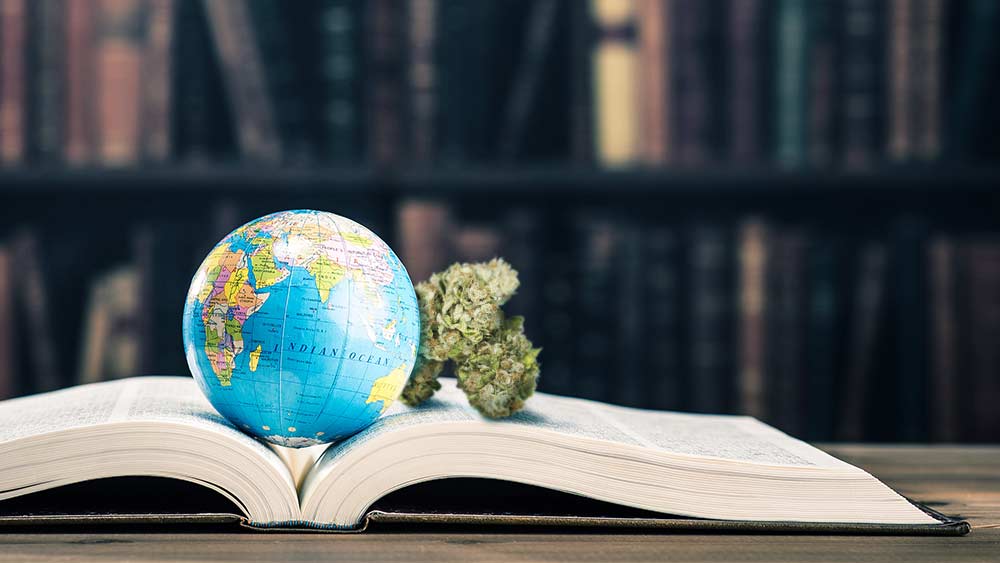The history of the cannabis plant spans millennia and cultures. From its not-so-humble beginnings all the way up to the 21st century, it has had a wide range of uses.
The multifaceted origins of the cannabis plant can be traced back to the steppes of Central Asia, ancient Chinese medicine, rituals in Hinduism, Herodotus’ writings, the colonization of America, African tribal culture and the Mexican Revolution.
To examine this enticing history of marijuana, let’s start at the very beginning.
Hemp history, ancient China and ma
One of humanity’s oldest cultivated crops, the cannabis plant was first thought to have originated in Central Asia, in present-day Mongolia and southern Siberia. However, a recent study conducted by John McPartland at the University of Vermont indicated cannabis could have originated high up in the so-called Roof of the World – the Tibetan Plateau.
Through the analysis of ancient pollen, McPartland and his colleagues drew the conclusion that cannabis first emerged over 3,000 meters above sea level on the Tibetan Plateau in the vicinity of the Qinghai Lake about 28 million years ago.
When it comes to human use of the multipurpose plant, ancient Chinese culture offers great insight into the early history of marijuana. From hemp cloth, ropes, bowstrings and even paper to medicinal use, archeologists have found evidence that the Chinese used cannabis as far back as 10,000 B.C.
The possibly mythical figure of Emperor Shen Neng is often associated with the first recorded mention of the use of cannabis for its healing properties. Back in 2,700 B.C., Shen Neng recommended cannabis or ma as a treatment for a wide array of ailments, including inflammation and nausea.
Shiva, lord of bhanga, and Vedic use of cannabis
No history of cannabis is complete without mentioning its origins in the ancient Sanskrit religious texts known as the Vedas. These sacred texts began as an oral tradition that passed down through generations before finally being written between 1,500 and 500 B.C.
The fourth text, the Atharva Veda, mentions five sacred plants of the earth, one of which, known as bhanga, is believed by many scholars to be cannabis.
In Hinduism, cannabis or bhang is associated with Shiva, the god of destruction. According to legend, Shiva first discovered the miraculous properties of cannabis after ingesting poison in the famous myth of the churning of the ocean of milk.
This episode in Hindu philosophy, known as the samudra manthan, also explains the origin of amrita, or the nectar of immortality. In one version of the story, anywhere drops of the elixir of immortality fell, cannabis plants sprung out.
Today, bhang is a popular beverage throughout the Indian subcontinent and can be best described as a sort of weed milkshake with its roots going back as early as 1,000 B.C.
Marijuana in the Bible?
In 1936, anthropologist Sula Benet proposed that cannabis is mentioned in the Bible, but that its presence was erased during the first translation of the scriptures by the Greeks in the third century B.C.
One of these instances where she argues cannabis could have been mentioned is when Moses receives instructions from God on how to construct the tabernacle – or God’s earthly dwelling.
The passage goes as follows:
“Then the Lord said to Moses, ‘Take the following fine spices: 500 shekels of liquid myrrh, half as much of fragrant cinnamon, 250 shekels of fragrant calamus (cannabis), 500 shekels of cassia – all according to the sanctuary shekel – and a hin of olive oil. Make these into a sacred anointing oil, a fragrant blend, the work of a perfumer. It will be the sacred anointing oil.”
Scythians take their cannabis baths
The great historian Herodotus records in his Histories that the Eurasian nomad people known as the Scythians used cannabis in special steam baths.
He describes Scythians placing hemp seeds inside a dish with hot stones, which in turn “gives out such a vapour as no Grecian vapour-bath can exceed; the Scyths, delighted, shout for joy, and this vapour serves them instead of a water-bath; for they never by any chance wash their bodies with water.”
More recently, the earliest evidence of human consumption of cannabis as a drug was discovered. An international team of researchers found that wooden bowls excavated from burials at Jirzankal Cemetery in western China contained traces of burnt cannabis with tetrahydrocannabinol or THC – an indication it was used for its mind-altering properties.
Marijuana makes its way to Africa
The first instances of recorded cannabis use on the African continent came in the 17th century.
João dos Santos, a Dominican missionary, described in his account of the Portuguese colonization of Africa, Ethiopia Oriental (1609), that the locals used cannabis in the region of the Cape of Good Hope. The people called it “bangue” and utilized it for a variety of purposes from suppressing hunger to tribal ceremonies.
In 1658, the Dutch colonist Jan Van Riebeeck recorded that the Hottentot tribe valued hemp, or dagga as they dubbed it, more than gold, writing at one point that it “drugs their brain just as opium.”
Colonization, revolution, racism
The Spanish brought the plant to the New World where it was widely cultivated throughout colonial times. As it is easy to grow and has a wide array of uses, it’s easy to understand its omnipresence in early colonial history.
American colonists made good use of the versatile cannabis plant – Virginia even passed a law in 1619 requiring hemp to be grown on every farm in the colony – and was even used as currency at one point in Pennsylvania, Virginia, and Maryland, flourishing until the Civil War when other materials replaced marijuana.
However, refugees fleeing north from Mexico during the armed struggle of the Mexican Revolution (1910-1920) first introduced Americans to the joys of recreational marijuana use.
However, these people escaping the bloody conflict soon came to the forefront of the well-known anti-immigration and anti-marijuana campaigns of the 20th century in the United States.
In 1930, the Federal Bureau of Narcotics was established, a forerunner of the Drug Enforcement Administration (DEA), which is credited with criminalizing cannabis under the helm of its first commissioner Harry J. Anslinger.
The racist roots of marijuana prohibition are apparent from quotes from Anslinger, including this one:
“There are 100,000 total marijuana smokers in the US, and most are Negroes, Hispanics, Filipinos, and entertainers. Their Satanic music, jazz, and swing result from marijuana use. This marijuana causes white women to seek sexual relations with Negroes, entertainers, and any others.”
An interesting movie that encapsulates the anti-marijuana frenzy of the times is Reefer Madness.
from 1936 which depicts several high school students driven to madness by the dangers of pot.
The following year, Congress passed the contentious Marihuana Tax Act of 1937 which essentially made marijuana illegal in the United States.
Marijuana in today’s society
According to a survey conducted by Yahoo News and Marist College in 2017, nearly 55 million Americans, or 22%, used marijuana once or twice in the year preceding the research, while
about 35 million were described as regular users – and in the meantime, pot was legalized or decriminalized in several additional states. This is a hugely important factor, as 27% of marijuana abstainers in the same survey cited its illegality as the main reason they keep away from pot.
Either way, marijuana’s status in today’s pop culture is undeniable. What’s even more interesting is the way its perception has changed in contemporary politics. During the presidency of Ronald Reagan (1981-1989), marijuana was known as “probably the most dangerous drug in the United States today.” His administration’s enforcement of anti-cannabis policies was largely followed by President George H.W. Bush.
Today, however, the picture is quite different. Nearly every 2020 Democratic presidential candidate supports removing marijuana from the federal list of controlled substances and its legalization could shape up to be one of the top issues presidential hopefuls tackle in debates.
With more than half of Americans supporting pot legalization in 2019 and more than half of US states legalizing it to some degree, cannabis has come a long way in US politics, and its history provides hope that one day it will be universally recognized for its potential benefits.





